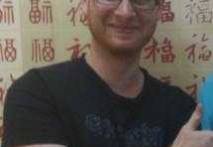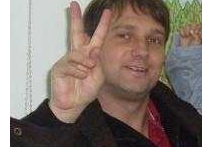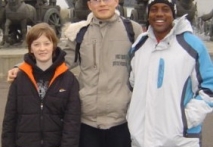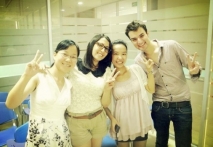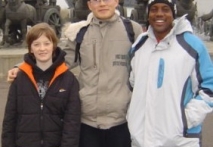学习心得
语风汉语学生Jennifer
学习心得
语风汉语学生Jennifer
我叫Jennifer,我非常喜欢在语风汉语无锡校学习汉语,这是一个非常好的学...
语风汉语无锡校 Zack
学习心得
语风汉语无锡校 Zack
我叫Zack,我是法国人,无锡语风汉教中心是一个学习中国文化和对外汉语的好...
语风汉语学生Kevin
学习心得
语风汉语学生Kevin
语风汉语是一个最理想的学习汉语和中国文化的好地方,学校给我们提供了很多...
语风汉语学生Florent
学习心得
语风汉语学生Florent
我非常喜欢无锡语风汉语学校,这里真的有最简单的汉语学习方法,我学习汉...
语风汉语学生Brad
学习心得
语风汉语学生Brad
我叫Brad,我是澳大利亚人,我再语风汉语学校学习汉语。我现在可以独立和我的...
语风汉语我的无锡学习汉语之路
学习心得
语风汉语我的无锡学习汉语之路
Cherry Queen 中文名: 钱沫以 &nbs...
无锡语风汉语优秀汉语学生Victoria
学习心得
无锡语风汉语优秀汉语学生Victoria
维多利亚Victoria,来自德国的一位11岁的小女孩 ,现读于语...
无锡语风汉语外国学生Michael的汉语学习之路
学习心得
无锡语风汉语外国学生Michael的汉语学习之路
Michael 刚刚来我们无锡语风汉语学校不久的美国学...
苏州汉语学生Jude
学习心得
苏州汉语学生Jude
我叫Jude,在苏州语风汉语学校学习汉语,我也在无锡语风汉语学校学习过很长时间...
无锡语风汉语学校Jessie
学习心得
无锡语风汉语学校Jessie
我学习汉语已经八年了,我能听明白别人说汉语,但是我自己说汉语却觉得说...
汉语 加官方
关注了解更多对外汉语资讯

0510-81151808
1866 1199 988
Sandy.Swun
519988808
无锡新区长江一号 茂业
深茂商务中心8号楼405室
无锡语风学校
语风汉语教学中心
无锡语风国际教育交流中心
Wuxi Mandarin Education School
10 Forbidden City Facts You Should Know

China's most glorious palace sits in the heart of the capital city of Beijing. As one of China's largest and most well-preserved heritage sites, the Forbidden City is a must-see for all visitors to China.
It is considered to be among the world's top 5 most important palaces of all time, and is China's most popular single-site tourist attraction. Read on for the top facts pertinent to tourists.
Chinese name: 故宫Gùgōng /goo-gong/ 'Formers Palace'
1. The Forbidden City is the world’s largest imperial palace.
The Forbidden City occupies 720,000 sq. m (7,750,000 sq. ft), over three times larger than the Louvre Palace in France. An estimated 1 million laborers worked to complete the structure.
It has more than 90 palace quarters and courtyards, 980 buildings and over 8,728 rooms. (A common myth states that there are 9,999.5 rooms, but it is not supported by survey evidence.)
For a size comparison, the Vatican measures 440,000 square meters, and the Kremlin measures 275,000 square meters. The impressiveness of the size and scale of this ancient fortified palace is not to be missed.
You will be unable to appreciate all the palace quarters even you spend a full day there. Our insider’s guide will help you to plan your trip.
2. The Forbidden City is a masterpiece of Chinese architecture.
The Forbidden City is the world's largest collection of well-preserved medieval wooden structures.
Apart from the magnitude of the complex, the detail of the architecture is also astounding. Every detail reflects features of traditional Chinese architecture and rich Chinese culture.
For example:
Except for Donghua Gate (‘East Glory’ Gate), all gates in the Forbidden City are decorated with a nine-by-nine array of gilded door-studs. Nine implies supremacy and eternity in Chinese culture.
Rows of auspicious animal statues, such as dragons, phoenixes, and lions, were placed along roof ridges of the important halls to invoke prosperity and good fortune.
3. The majestic Outer Court has no trees.
The Forbidden City is composed of a ceremonial Outer Court and a residential Inner Court. You can find many trees in the Inner Court, but no trees in the Outer Court.
There is no universal conclusion as to why there are no trees in the Outer Court. However, there are two main theories:
a. As the Outer Court was where solemn public ceremonies were held, and the emperors’ “supreme godly power” and imperial dignity were displayed, no trees were allowed, as they would overshadow or disrupt the majesty of the atmosphere.
b. A lack of vegetation would give assassins nowhere to hide, and clear lines of sight for defensive purposes.
4. The Forbidden City was home to 24 Chinese emperors.
Emperor Yongle, third of the Ming Dynasty, began its construction in 1406 and the complex was completed in 1420. 14 Ming emperors held power there until the Manchus took possession in 1644 and moved the capital to Shenyang for a few months.
The Qing Dynasty soon moved the capital back to Beijing and the Forbidden City. 10 Qing emperors ruled from there until the abdication of the last emperor in 1912, at the creation of the Republic of China.
5. The Palace Museum is one of the world's largest cultural museums.
The Forbidden City, a.k.a. the Palace Museum, is home to the best collection of Chinese historical artifacts in the world. Collections span thousands of years of Chinese history and it’s considered one of the best museums in the world. It's top of China's top 10 museums list.
Visitors can see a stunning array of ancient treasures and buildings while touring the complex. Ancient porcelain and jade, gardens, courtyards, and relics of historic significance for China and the world feature prominently. For more see The Top 10 Treasures in the Forbidden City.
6. Part of the museum's former collection is in Taiwan.
In 1933, some national treasures in the Forbidden City were evacuated to preserve them from the threat of Japanese invasion. After the end of World War II, some of the collection was returned, but some is now housed in the National Palace Museum in Taipei.
7. The Forbidden City is China's most popular single-site tourist attraction.
Due to its cultural significance and unique beauty, the Forbidden City is extremely popular with both Chinese and foreign tourists. The palace museum boasts 14 million visitors annually, more than any single section of the Great Wall.
These overwhelming numbers often make for extensive lines, particularly on national holidays and weekends. The Chinese government is working hard to ensure the constant flow of visitors is well-regulated, and to prevent harm to the ancient buildings by the large crowds.
The palace is considered a must-see for everyone lucky enough to visit Beijing.
8. 40% of the Forbidden City is still forbidden access.
The Palace Museum is already large enough for you to spend over a day exploring. Can you believe that’s only the 60% that’s currently open to the public?
An overall repair of the Forbidden City is underway and planned to finish by 2020. Over 80% of the palace is expected to be open to visitors at the end of 2018.
9. A Forbidden City trip is not complete without a visit to Jingshan Park.
You can enjoy a hilltop view of the whole complex.
If you want to see how large the Forbidden City is, pay a visit to nearby Jingshan Park, where you can enjoy a hilltop view of the whole complex.
Jingshan Park is a few minutes’ walk from the Forbidden City exit — a perfect end for your tour.



